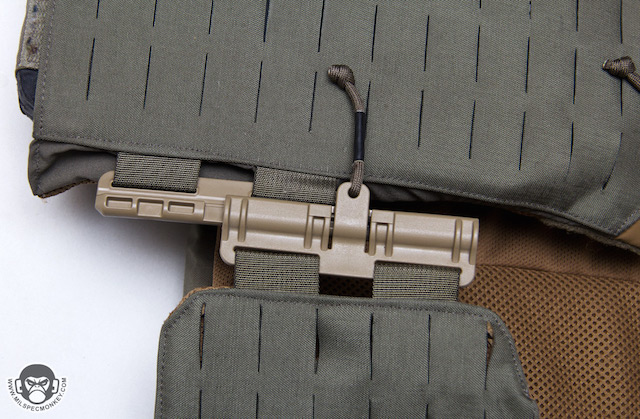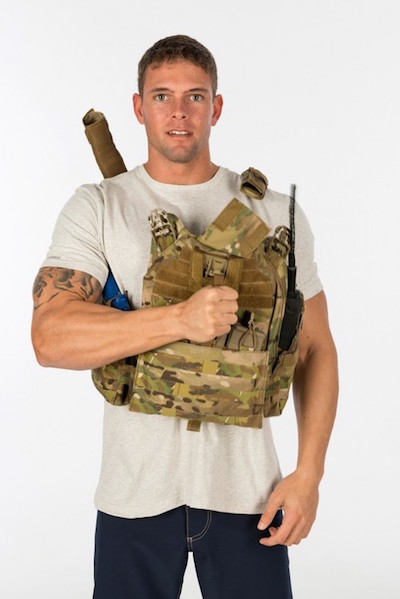Get the weekly SPARTANAT newsletter.
Your bonus: the free E-Book from SPARTANAT.

Equipment: Quick Release - who needs it?
The need for quick release systems in gear remains questionable. Despite marketing hype, practicality and effectiveness in emergency situations are debatable. Manufacturers follow trends to avoid obsolescence, but the true advantages are yet to be proven.
Every well-known manufacturer in the gear sector has one. Or were they pressured to equip plate carriers with a quick release system due to increasing demand from end users? We don't know for sure ... But let's think in a completely different direction: let's ask ourselves why we even need a quick release system ...
My experience with quick release systems started in the field with the system on combat backpacks. The basic idea here is: in a sudden firefight, the backpack should quickly detach from the wearer so that they can engage in the firefight unhindered. What does it look like in reality? The wearer triggers the quick release system with the left hand, and the backpack’s harness is scattered on the ground in two or three parts.
In the end, everything is definitely scattered on the ground in such a way that the pieces cannot be found after the firefight.
For sure, they are so scattered that the pieces cannot be found after the firefight. If the owner of the quick release system even manages to disengage from the enemy after the firefight, they may have to deal with a combat backpack shoulder bag for the next few days.
In the case of the Austrian combat backpack module, the loop of the quick release system was cleverly attached so that in stress or darkness, one grabs that loop instead of pulling the strap tightly around the backpack. What happens next, some surely know, another shoulder bag. If one has enough sense not to handle this quick release system too roughly, then at least it remains intact and the pieces can be put back together - if they can be found. In the worst case, the plastic part breaks and the backpack cannot be released - but thrown away instead.
Manufacturers could remedy this by simply sewing a high-quality and durable plastic clip in between or threading a loop through the plastic adapter, which would allow the wearer to enlarge the shoulder straps. This way, the wearer could open the clip with the left hand, and the backpack would slip off from the right side - without taking the hand off the weapon.
What is often not the case with many systems, here the shooter has to free their weapon hand to discard the backpack.
 But why should a quick release system be useful for a plate carrier?
But why should a quick release system be useful for a plate carrier?
The argument of proponents is to be able to help the injured faster in case of emergency, but also to help oneself faster.
In reality, however, this looks different too. In TCCC, whether MARCH or CABC, there are no fundamentals in training that instruct the CFR to trigger the quick release on the plate carrier. They will take their cutter and cut the plate carrier off the wounded.
During self-treatment, one must consider that under stress and with a lot of adrenaline, fine motor skills drop to zero, and the person only remembers and holds on to things that they first "often imprint in muscle memory", i.e., repeatedly perform, and apply things they know and trust.
In plain language: here, every soldier under stress will raise the flap and tear the plate carrier off their body, as they have always done.
The only reason I can see to open a plate carrier with a quick release would be if one gets stuck with the plate carrier in a burning vehicle or falls into the water.
Especially during the water jump, in a self-experiment, it shows that one does not pull the quick release, but rather quickly gets rid of the plate carrier in the familiar way.
But let's be honest: how many people fall into the water and are in danger of drowning, justifying the installation of a system that is actually not used? Especially during the water jump, in a self-experiment, it shows that one does not pull the QR, but rather quickly gets rid of the plate carrier in the familiar way.
The systems of the various manufacturers differ very little from each other. The trigger is usually located under the left shoulder pad, to convert the plate carrier into several connected parts. Quick and easy reassembly is out of the question.
Only the system from First Spear (video above) I find much better designed for my taste. They completely do without a kangaroo pocket or belly flap, the plate carrier is hooked on the sides with a plastic closure, and the same closure is also used for the shoulder straps. The advantage of it all: the plate carrier does not disintegrate into its components. Also, the user does not have to learn new movements or applications, making the system more resistant to stress. In Germany, most recently, Lindnerhof Taktik followed suit, Zentauron now offers ZenTubes. Other manufacturers try to achieve the same effect with Cobra clasps.
CONCLUSION: My personal opinion is that a quick release system does not have any real advantages to justify production and development costs. Here, marketing has simply won, and other manufacturers have been forced to jump on this bandwagon to avoid the situation where their plate carrier is considered outdated.

The new plate carrier from Lindnerhof already has a quick release system. The closures look similar to those of First Spear, but work differently.
SPARTANAT is the online magazine for Military News, Tactical Life, Gear & Reviews.
Send us your news: [email protected]
Ad
similar
Get the weekly SPARTANAT newsletter.
Your bonus: the free E-Book from SPARTANAT.


